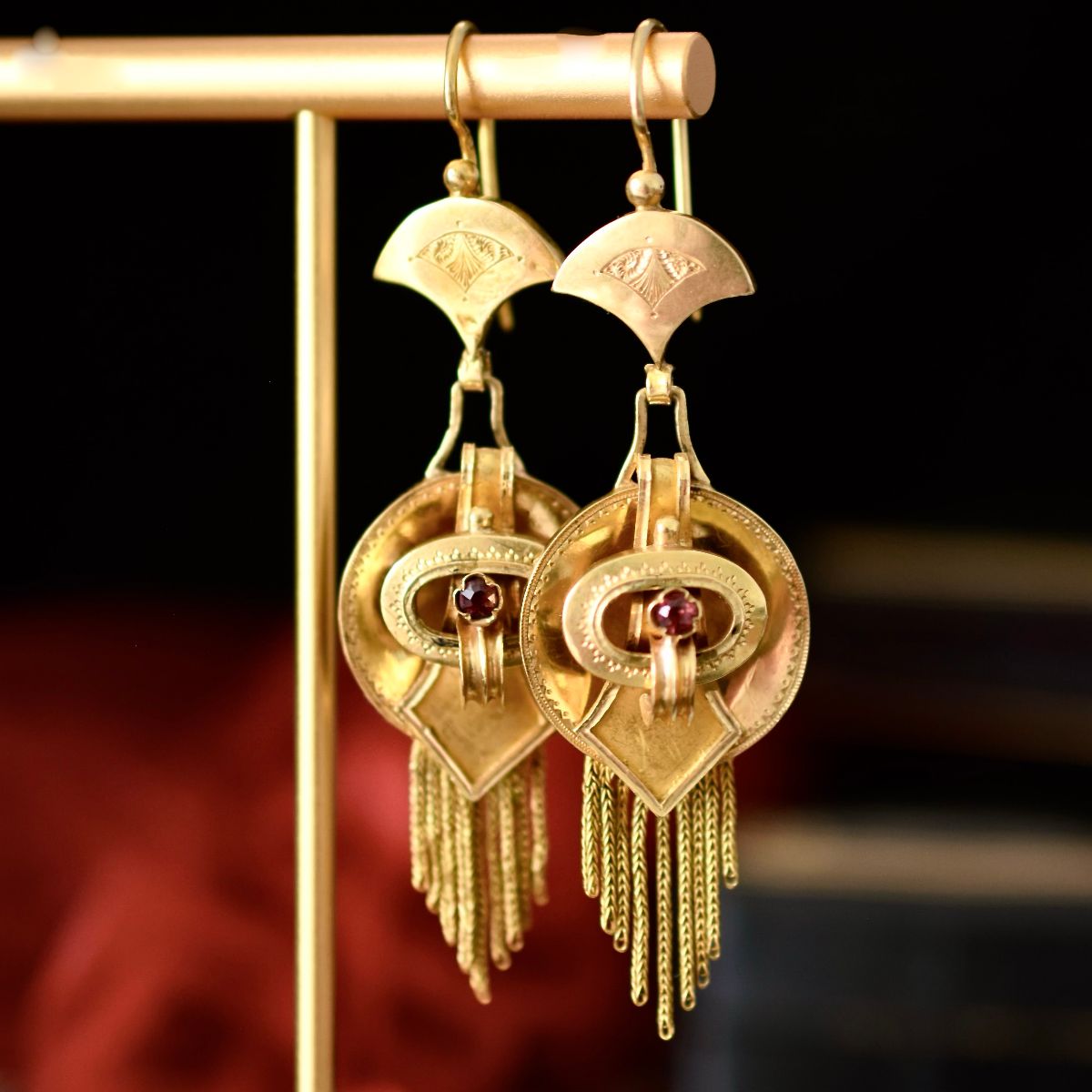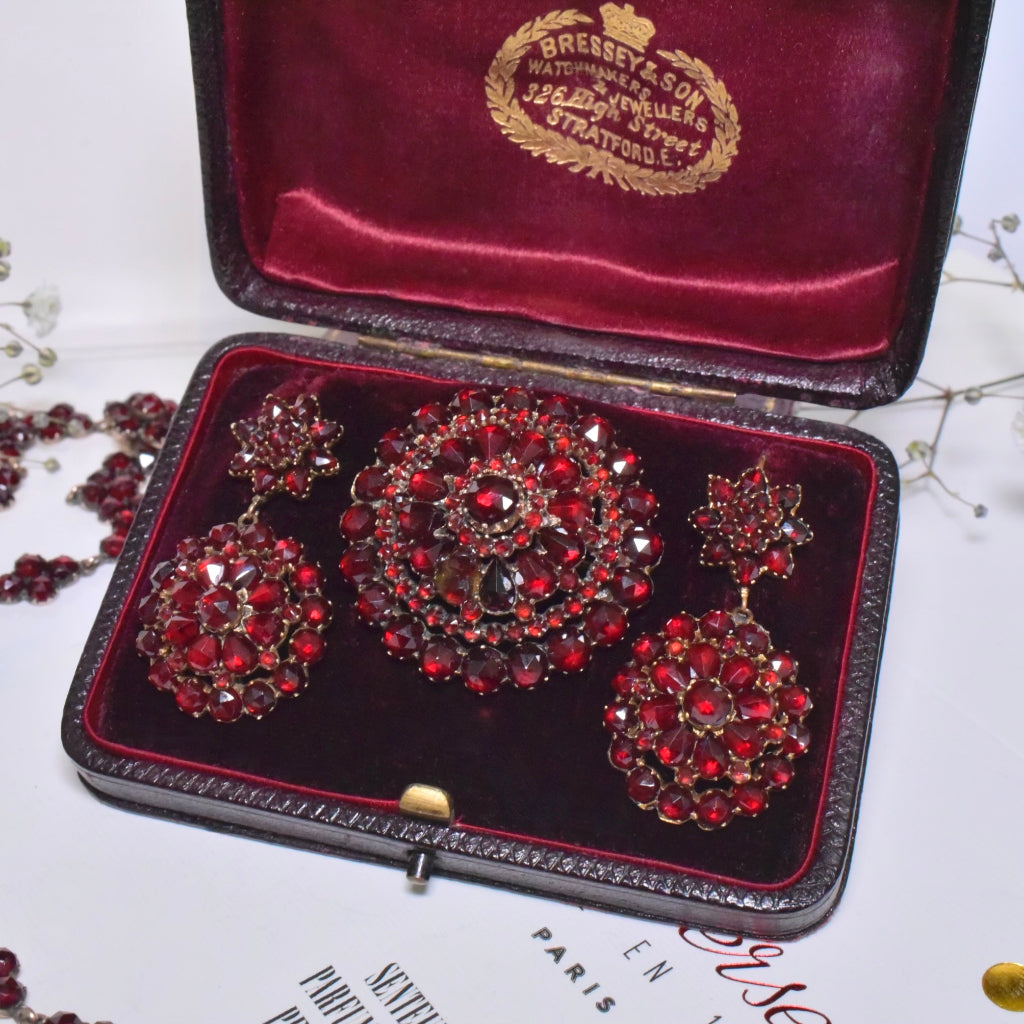Opulent Elegance: A Journey Through The Georgian Period Jewellery
Explore our Georgian Jewellery HERE
The Georgian era, spanning from 1714 to 1830, was a time of grandeur and opulence, reflected not only in the architecture, fashion, and art of the period but also in its jewellery.
Named after the four King Georges of England, this era witnessed a remarkable evolution in jewellery design, characterised by intricate craftsmanship, luxurious gemstones, and symbolic motifs. Georgian jewellery remains a testament to the artistic and cultural ethos of the 18th and early 19th centuries, and its timeless elegance continues to captivate collectors and enthusiasts today.
Intricate Craftsmanship and Techniques
One of the defining features of Georgian jewellery is its meticulous craftsmanship. Artisans of this era were renowned for their attention to detail, employing techniques that allowed them to create delicate and elaborate designs.
Among these techniques were repoussé, cannetille, and filigree. Repoussé involved hammering metal from the reverse side to create intricate designs in relief, resulting in pieces that were both visually stunning and lightweight.
Cannetille and filigree, on the other hand, involved twisting fine wires of gold or silver into elaborate patterns, often resembling lace. These techniques allowed jewellers to produce pieces that were not only beautiful but also
highly intricate and ornate.

SOLD
Antique Georgian Tortoiseshell Turquoise 14ct Gold Matlese Cross
Luxurious Gemstones and Materials
The choice of gemstones in Georgian jewellery reflected the period's opulence and fascination with luxury.
Diamonds were highly prized and often set in closed-back settings to enhance their sparkle. These settings, which were typically foiled, allowed light to reflect off the back of the gemstone, creating a dazzling effect.
Other popular gemstones included rubies, emeralds, sapphires, and garnets, as well as semi-precious stones like turquoise, amethyst, and topaz. Paste, a type of leaded glass used to imitate gemstones, was also commonly used and allowed for the creation of affordable yet dazzling pieces. Pearls were another favorite, often used to accentuate the beauty of other gemstones or as the focal point of a piece.

Now Available
Antique 15ct Rose Gold Imperial Topaz And Half Pearl Ring Circa 1820’s

Now Available
Antique Georgian 9ct Gold And Silver Black Dot Paste Flower Ring Circa 1800
The Symbolism and Sentimental Value of Georgian Mourning Jewellery
The Georgian era is renowned for its exquisite and deeply symbolic mourning jewellery. These pieces were not merely ornamental but served as poignant mementos of departed loved ones, encapsulating the era’s attitudes towards death and remembrance.
One of the most striking features of Georgian mourning jewellery is its rich symbolism. Common motifs included skulls, coffins, and urns, representing mortality and the inevitable passage of time. Black enamel, jet, and onyx were frequently used to convey mourning, while pearls symbolised tears. These elements combined to create pieces that were both visually striking and emotionally resonant.
The sentimental value of Georgian mourning jewellery was further heightened by the incorporation of personal elements such as locks of hair from the deceased. Hairwork, where hair was intricately woven into the design of the jewellery, provided a tangible connection to the loved one. Engravings of names, dates, and epitaphs added another layer of personal significance.

In essence, Georgian mourning jewellery served as a wearable tribute, allowing individuals to keep the memory of their loved ones close. These pieces remain a testament to the era's intricate craftsmanship and the deep emotional ties that defined Georgian society.
The Georgian period of jewellery design was heavily influenced by a variety of movements that were prevalent during this time. One of the most significant influences on Georgian jewellery was the Neoclassical movement, which drew inspiration from the art and architecture of ancient Greece and Rome. This led to the incorporation of classical motifs such as cameos, intaglios, and laurel wreaths into jewellery designs.
Another important influence on Georgian jewellery was the Rococo movement, characterised by its ornate and delicate designs. This style was reflected in the use of intricate filigree work, delicate enamel detailing, and the incorporation of natural motifs such as flowers, leaves, and vines.
In summary, the Georgian period of jewellery design was a time of great innovation and creativity, with influences ranging from Neoclassical and Rococo styles to the sentimental motifs of the era. These influences combined to create a unique and diverse range of jewellery pieces that continue to be admired and appreciated to this day.

SOLD
Antique Georgian Natural Garnet Riviere 9ct Gold Necklace Circa 1800 and Georgian Flat Cut Garnet Cross Circa 1820
References:
https://www.georgianjewelry.com/reference/about-georgian-antique-jewelry
Lang University - Georgian Jewellery

